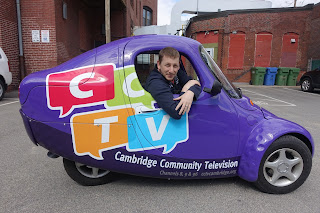1974 was a momentous year in Boston. As I have written elsewhere on my blog, it was the year of busing and all the racial strife that brought.
It was also the year that the city of Boston began to create the “Combat Zone” on lower Washington Street, the city’s infamous red light district.
I have long been fascinated by the Combat Zone.
As an urban planner, I know adult entertainment is a challenging proposition in any community. Because pornography is First Amendment protected speech, communities cannot ban it outright. Still, Boston in the 1970s did not want seedy strip clubs and massage parlors creeping too close to residential neighborhoods and so created a specific zone for them.
As a lover of history, I know that nothing happens in a city entirely by random chance. There is always a reason and a logic, no matter how obscure, that depends on what came before. The Combat Zone was no exception. The urban renewal efforts of the early 1960s destroyed the old neighborhood of Scollay Square. In replacing it with Government Center, planners displaced all the peep shows and tattoo parlors that had served generations of U.S. servicemen, pushing these activities further out into the neighborhoods. Boston was trying to manage this process by creating the Combat Zone.
Finally, on a more personal note, I remember the Combat Zone. Visits to Boston in the early 1980s allowed me to see it when it was still in its heyday. It's hard to imagine now, but standing with your back to the Park Street T stop, looking towards Downtown Crossing, you were staring it in the face. As a New York City kid, of course I looked down on what Boston considered seedy. It didn't compare to Times Square either in size or in scale, and by the gritty standards of the day, it just seemed quaint.
Still, Boston has changed so much in recent times, becoming so much cleaner and wealthier and more built-up, that looking back at the Combat Zone is like looking into an oddly-shaped mirror and seeing how much we have changed in the intervening decades.
It is my hope, dare I say my intention, to write more about the Combat Zone over the coming months, but as a teaser, I will leave you with this interesting letter I found in the city’s archives. It comes from Mace Menninger, the director of Development Planning and Zoning at the Boston Redevelopment Authority, and it is dated January 3, 1977. It is addressed to James Schroeder, the director of urban planning at the City of Dallas in response to Mr. Schroeder’s request for information about the zoning efforts that Boston undertook. Its third paragraph ends with this wonderful sentence, “So, until we think of something better, it is the best regulation we have.” Isn’t that always the case.
Paragraph 3 ...
While we consider that Boston’s regulation has been effective and achieved its purpose, the concept of confinement to one area has sometimes been misrepresented to mean that “anything goes” there, and this feature, however erroneous, has been criticized in the press because of a recent much publicized violent incident in the “combat zone”. However, to eliminate the Adult Entertainment Zone as a land use control would have little or no impact in reality on the activities conducted there, whether legal or illegal, and alternatively could do serious harm by allowing their spread to locations closer to residential neighborhoods. So, until we think of something better, it is the best regulation we have.





































